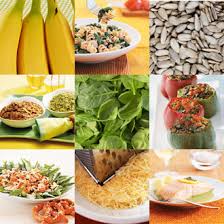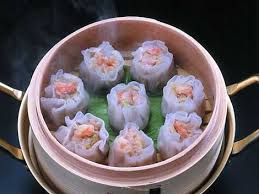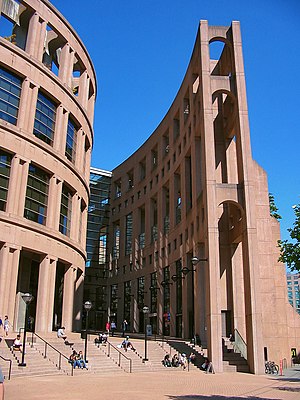Cooking is the process of preparing food by applying heat, selecting, measuring and combining of ingredients in an ordered procedure for producing safe and edible food. The process encompasses a vast range of methods, tools and combinations of ingredients to alter the flavor, appearance, texture, or digestibility of food. Factors affecting the final outcome include the variability of ingredients, ambient conditions, tools, and the skill of the individual doing the actual cooking.
The diversity of cooking worldwide is a reflection of the aesthetic, agricultural, economic, cultural, social and religious diversity throughout the nations, races, creeds and tribes across the globe.
Applying heat to food usually, though not always, chemically transforms it, thus changing its flavor, texture, consistency, appearance, and nutritional properties. Methods of cooking that involve the boiling of liquid in a receptacle have been practised at least since the 10th millennium BC, with the introduction of pottery.
History of cooking
 There is, as yet, no clear evidence as to when cooking was invented. Richard Wrangham argues that cooking was invented as far back as 1.8 million to 2.3 million years ago. Other researchers believe that cooking was invented as late as 40,000 or 10,000 years ago. Evidence of fire is inconclusive as wildfires started by lightning-strikes are still common in East Africa and other wild areas, and it is difficult to determine as to when fire was used for cooking, as opposed to just being used for warmth or for keeping predators away. Most anthropologists contend that cooking fires began in earnest barely 250,000 years ago, when ancient hearths, earth ovens, burnt animal bones, and flint appear across Europe and the middle East. Back 2 million years ago, the only sign of fire is burnt earth with human remains, which most anthropologists consider coincidence rather than evidence of intentional fire.
There is, as yet, no clear evidence as to when cooking was invented. Richard Wrangham argues that cooking was invented as far back as 1.8 million to 2.3 million years ago. Other researchers believe that cooking was invented as late as 40,000 or 10,000 years ago. Evidence of fire is inconclusive as wildfires started by lightning-strikes are still common in East Africa and other wild areas, and it is difficult to determine as to when fire was used for cooking, as opposed to just being used for warmth or for keeping predators away. Most anthropologists contend that cooking fires began in earnest barely 250,000 years ago, when ancient hearths, earth ovens, burnt animal bones, and flint appear across Europe and the middle East. Back 2 million years ago, the only sign of fire is burnt earth with human remains, which most anthropologists consider coincidence rather than evidence of intentional fire.
Proteins
Edible animal material, including muscle, offal, milk and egg white, contains substantial amounts of protein. Almost all vegetable matter (in particular legumes and seeds) also includes proteins, although generally in smaller amounts. These may also be a source of essential amino aci ds. When proteins are heated they become de-natured and change texture. In many cases, this causes the structure of the material to become softer or more friable - meat becomes cooked. In some cases, proteins can form more rigid structures, such as the coagulation of albumen in egg whites. The formation of a relatively rigid but flexible matrix from egg white provides an important component of much cake cookery, and also underpins many desserts based on meringue.
ds. When proteins are heated they become de-natured and change texture. In many cases, this causes the structure of the material to become softer or more friable - meat becomes cooked. In some cases, proteins can form more rigid structures, such as the coagulation of albumen in egg whites. The formation of a relatively rigid but flexible matrix from egg white provides an important component of much cake cookery, and also underpins many desserts based on meringue.
Liquids
Cooking oft en involves water which is frequently present as other liquids, both added in order to immerse the substances being cooked (typically water, stock or wine), and released from the foods themselves. Liquids are so important to cooking that the name of the cooking method used may be based on how the liquid is combined with the food, as in steaming, simmering, boiling, braising and blanching. Heating liquid in an open container results in rapidly increased evaporation, which concentrates the remaining flavor and ingredients - this is a critical component of both stewing and sauce making.
en involves water which is frequently present as other liquids, both added in order to immerse the substances being cooked (typically water, stock or wine), and released from the foods themselves. Liquids are so important to cooking that the name of the cooking method used may be based on how the liquid is combined with the food, as in steaming, simmering, boiling, braising and blanching. Heating liquid in an open container results in rapidly increased evaporation, which concentrates the remaining flavor and ingredients - this is a critical component of both stewing and sauce making.
Carbohydrates

Long-chain sugars such as starch tend to break down into simpler sugars when cooked, while simple sugars can form syrups. If sugars are heated so that all water of crystallisation is driven off, then caramelization starts, with the sugar undergoing thermal decomposition with the formation of carbon, and other breakdown products producing caramel. Similarly, the heating of sugars and proteins elicits the Maillard reaction, a basic flavor-enhancing technique.
An emulsion of starch with fat or water can, when gently heated, provide thickening to the dish being cooked. In European cooking, a mixture of butter and flour called a roux is used to thicken liquids to make stews or sauces. In Asian cooking, a similar effect is obtained from a mixture of rice or corn starch and water. These techniques rely on the properties of starches to create simpler mucilaginous saccharides during cooking, which causes the familiar thickening of sauces. This thickening will break down, however, under additional heat.
Vitamins and minerals
 K). Many minerals are also essential in small quantities including iron, calcium, magnesium and sulphur; and in very small quantities copper, zinc and selenium. The micronutrients, minerals, and vitamins[1] in fruit and vegetables may be destroyed or eluted by cooking. Vitamin C is especially prone to oxidation during cooking and may be completely destroyed by protracted cooking. However, research led by Dr Sue Southon of the Institute of Food Research in Norwich has found that cooking vegetables facilitates the absorption of micronutrients. Cooked food may therefore provide more health benefits than raw food.[2]
K). Many minerals are also essential in small quantities including iron, calcium, magnesium and sulphur; and in very small quantities copper, zinc and selenium. The micronutrients, minerals, and vitamins[1] in fruit and vegetables may be destroyed or eluted by cooking. Vitamin C is especially prone to oxidation during cooking and may be completely destroyed by protracted cooking. However, research led by Dr Sue Southon of the Institute of Food Research in Norwich has found that cooking vegetables facilitates the absorption of micronutrients. Cooked food may therefore provide more health benefits than raw food.[2]Cooking methods
Microwave
Microwaving cooks food faster than most other methods. You don't need to add fat to meat, poultry, or fish, and use little or no water with vegetables. Microwaving is an excellent way to retain vitamins and color in vegetables. When food is boiled in water and the water is subsequently discarded the water soluble vitamins and minerals are lost.
Steam 
Steaming is a good way of cooking vegetables without using fat. Try this method for frozen and fresh vegetables, such as asparagus, broccoli, carrots, spinach, and summer squash. Use a vegetable steamer or colander to hold vegetables, place in pot with a little boiling water and cover. Cook until the vegetables are just tender to preserve color and vitamins.
Braise
Braising is used m
Barbecue
Grilling
Grilling (Broili ng, in the US) is a quick way of cooking foods under direct heat without added fat. It's great for poultry, fish, and tender cuts of meat. Use a broiling pan or rack set in a shallow pan to allow fat to drain away. If basting, use lemon juice, fruit juice, or both for flavor. Vegetables like onions, zucchini, and tomatoes can also be broiled.
ng, in the US) is a quick way of cooking foods under direct heat without added fat. It's great for poultry, fish, and tender cuts of meat. Use a broiling pan or rack set in a shallow pan to allow fat to drain away. If basting, use lemon juice, fruit juice, or both for flavor. Vegetables like onions, zucchini, and tomatoes can also be broiled.
Stirfry
Quick and easy, stirfrying requires relatively little fat and preserves the crisp ness and color of vegetables. Heat wok or heavy skillet, add just enough oil to cover the base of the pan, add food, and stir constantly while cooking. If using meat, start with thin strips or diced portions of meat, poultry, or fish. When meat is almost done, add small pieces of evenly cut vegetables such as onions, broccoli, cauliflower, zucchini, sprouts, carrots, green peppers, and mushrooms. Serve with a low-salt "sweet & sour" or soy sauce.
ness and color of vegetables. Heat wok or heavy skillet, add just enough oil to cover the base of the pan, add food, and stir constantly while cooking. If using meat, start with thin strips or diced portions of meat, poultry, or fish. When meat is almost done, add small pieces of evenly cut vegetables such as onions, broccoli, cauliflower, zucchini, sprouts, carrots, green peppers, and mushrooms. Serve with a low-salt "sweet & sour" or soy sauce.
Roast or Bake
Roasting takes somewhat longer than other methods, but requires little work on your pa rt. Poultry and tender cuts of meat may be roasted. Cook in oven, uncovered on a rack in a shallow roasting pan to drain fat and allow heat to circulate around meat. Potatoes, sweet potatoes, winter squashes, and onions can also be baked. Simply wash, prick skins and place vegetables on a baking sheet in oven.
rt. Poultry and tender cuts of meat may be roasted. Cook in oven, uncovered on a rack in a shallow roasting pan to drain fat and allow heat to circulate around meat. Potatoes, sweet potatoes, winter squashes, and onions can also be baked. Simply wash, prick skins and place vegetables on a baking sheet in oven.
Broil or Stew
F
Food safety
When heat is used in the preparation of food, it can kill or inactivate potentially ha
The effect will depend on temperature, cooking time, and technique used. The temperature range from 41°F to 135°F (5°C to 57°C) is the "food danger zone." Between these temperatures bacteria can grow rapidly. Under optimal conditions, E. coli, for example, can double in number every twenty minutes. The food may not appear any different or spoiled but can be harmful to anyone who eats it. Meat, poultry, dairy products, and other prepared food must be kept outside of the "food danger zone" to remain safe to eat. Refrigeration and freezing do not kill bacteria, but only slow their growth. When cooling hot food, it should not be left standing or in a blast chiller for more than 90 minutes.
Cutting boards are a potential breeding ground for bacteria, and can be quite hazardous unless safety precautions are taken. Plastic cutting boards are less porous than wood and have conventionally been assumed to be far less likely to harbor bacteria.[3] This has been debated, and some research has shown wooden boards are far better.[4] Washing and sanitizing cutting boards is highly recommended, especially after use with raw meat, poultry, or seafood. Hot water and soap followed by a rinse with an antibacterial cleaner (dilute bleach is common in a mixture of 1 tablespoon per gallon of water, as at that dilution it is considered food safe, though some professionals choose not to use this method because they believe it could taint some foods), or a trip through a dishwasher with a "sanitize" cycle, are effective methods for reducing the risk of illness due to contaminated cooking implements.[4]
Effects on nutritional content of food
Cooking prevents many foodborne illnesses that would otherwise occur if the raw food was eaten. Cooking also increases the digestibility of some foods such as grains. Many foods are inedible raw. For example kidney beans are toxic when raw, due to the chemical phytohaemagglutinin.[5]
Proponents of Raw foodism argue that cooking food increases the risk of some of detrimental effects on food or health. They point out that the cooking of vegetables and fruit containing vitamin c both elutes the vitamin into the cooking water and degrades the vitamin through oxidation.[citation needed] Peeling vegetables can also substantially reduce the vitamin C content, especially in the case of potatoes where most vitamin C is in the skin.[citation needed] However, research has also suggested that a greater proportion of nutrients present in food is absorbed from cooked foods than from uncooked foods.[2]
Baking, grilling or broiling food, especially starchy foods, until a toasted crust is formed generates significant concentrations of acrylamide, a possible carcinogen.[citation needed]
Cooking dairy products may reduce a protective effect against colon cancer. Researchers at the University of Toronto suggest that ingesting uncooked or unpasteurized dairy products (see also Raw milk) may reduce the risk of colon cancer.[citation needed] Mice and rats fed uncooked sucrose, casein, and beef tallow had one-third to one-fifth the incidence of microadenomas as the mice and rats fed the same ingredients cooked.[6][7] This claim, however, is contentious. According to the Food and Drug Administration of the United States, health benefits claimed by raw milk advocates do not exist.[8] "The small quantities of antibodies in milk are not absorbed in the human intestinal tract," says Barbara Ingham, Ph.D., associate professor and extension food scientist at the University of Wisconsin-Madison. "There is no scientific evidence that raw milk contains an anti-arthritis factor or that it enhances resistance to other diseases."
Several studies published since 1990 indicate that cooking muscle meat creates heterocyclic amines (HCAs), which are thought to increase cancer risk in humans. Researchers at the National Cancer Institute found that human subjects who ate beef rare or medium-rare had less than one third the risk of stomach cancer than those who ate beef medium-well or well-done.[9] While eating muscle meat raw may be the only way to avoid HCAs fully, the National Cancer Institute states that cooking meat below 212 °F (100 °C) creates "negligible amounts" of HCAs. Also, microwaving meat before cooking may reduce HCAs by 90%.[10] Nitrosamines, present in processed and cooked foods, have also been noted as being carcinogenic, being linked to colon cancer.
Research has shown that grilling or barbecuing meat and fish increases levels of carcinogenic Polycyclic aromatic hydrocarbons (PAH). However, meat and fish only contribute a small proportion of dietary PAH intake - most intake comes from cereals, oils and fats.[11] German research in 2003 showed significant benefits in reducing breast cancer risk when large amounts of raw vegetable matter are included in the diet. The authors attribute some of this effect to heat-labile phytonutrients.[12]
Heating sugars with proteins or fats can produce Advanced glycation end products ("glycotoxins").[13] These have been linked to ageing and health conditions such as diabetes.
Science of cooking
The application of scientific knowledge to cooking and gastronomy has become known as molecular gastronomy. This is a subdiscipline of food science. Important contributions have been made by scientists, chefs and authors such as Herve This (chemist), Nicholas Kurti (physicist), Peter Barham (physicist), Harold McGee (author), Shirley Corriher (biochemist, author), Heston Blumenthal (chef), Ferran Adria (chef), Robert Wolke (chemist, author) and Pierre Gagnaire (chef).
Chemical processes central to cooking include the Maillard reaction - a form of non-enzymatic browning involving an amino acid, a reducing sugar, and heat.
Conclusion
cooking seem like arts and science because have so many style for cook and cut meat, vegetables and how to measure or put some ingredient in food. The method of cooking will think about how to cook good food for everyone and think about safety first.
Reference
http://en.wikipedia.org/wiki/Cooking

 A library is a collection of sources, resources, and services, and the structure in which it is housed; it is organized for use and maintained by a public body, an institution, or a private individual. In the more traditional sense, a library is a
A library is a collection of sources, resources, and services, and the structure in which it is housed; it is organized for use and maintained by a public body, an institution, or a private individual. In the more traditional sense, a library is a  These new undertakings indicate how the internet stimulate new or expanded public library service, and there are numerous unigue and worthwhile projects being initiated at individual libraried. However, it remains difficult to assess the impact of those internet-mediated service upon the use of libraries. Circulation statistic are a standard indicator of library usage and could offer some insight. In the late 1990s.Statistic indicated a general trend of decreasing library circulation, at the same time that increasing usage of electronic resources was noted, Since the begining of the recent recession in March 2001, the library reseach center found that cieculation has increased significantly ( supporting the notion goes up ). Recent research sponsored by the American library association (ALA) showed 26% of people visiting the public library used the internet while they were there. According to library journal's budget survey, Internet usage inside libraries rose by nearly 25% and remote usage was up 45% in libraries that measure such usage. Libraries from the New York public library to the multnomah country public library ( port-land, oregon ) report increased internet usage and an increase in technical guestion, many from job seekers, but not in attendance at internet instruction classes. Paralleling these increases. libraries report that internet related expanditures continue to rise as well. Library journal's budget survey showed that in 2002, respondents reported 4.6% of their budget going to the internet, representing a 28% increase from 3 years ago in 2003, libraries project a hefty 7.9% increase in internet expanditures over FY 2002.
These new undertakings indicate how the internet stimulate new or expanded public library service, and there are numerous unigue and worthwhile projects being initiated at individual libraried. However, it remains difficult to assess the impact of those internet-mediated service upon the use of libraries. Circulation statistic are a standard indicator of library usage and could offer some insight. In the late 1990s.Statistic indicated a general trend of decreasing library circulation, at the same time that increasing usage of electronic resources was noted, Since the begining of the recent recession in March 2001, the library reseach center found that cieculation has increased significantly ( supporting the notion goes up ). Recent research sponsored by the American library association (ALA) showed 26% of people visiting the public library used the internet while they were there. According to library journal's budget survey, Internet usage inside libraries rose by nearly 25% and remote usage was up 45% in libraries that measure such usage. Libraries from the New York public library to the multnomah country public library ( port-land, oregon ) report increased internet usage and an increase in technical guestion, many from job seekers, but not in attendance at internet instruction classes. Paralleling these increases. libraries report that internet related expanditures continue to rise as well. Library journal's budget survey showed that in 2002, respondents reported 4.6% of their budget going to the internet, representing a 28% increase from 3 years ago in 2003, libraries project a hefty 7.9% increase in internet expanditures over FY 2002.


 I am find form www. Bobelprize .org
I am find form www. Bobelprize .org




 Dictionary
Dictionary









